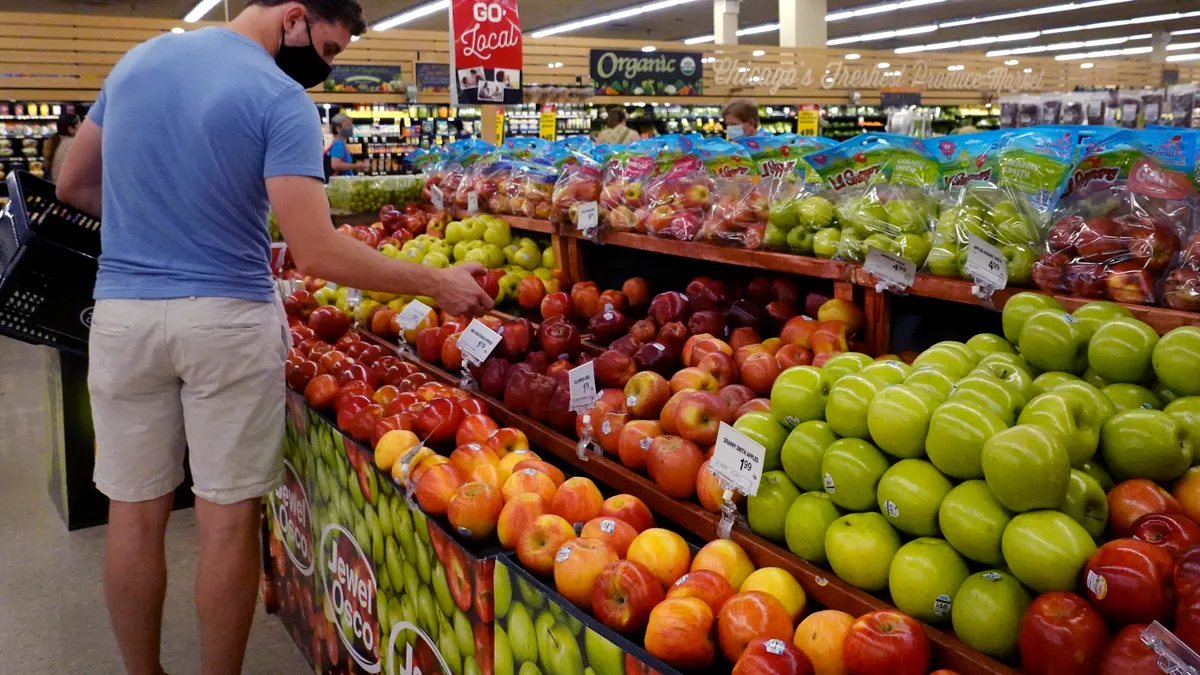Dive Brief:
- Slightly more than half of all consumers say they are following a diet or eating pattern — increasing to 52% from 39% in 2021 — according to the International Food Information Council's 2022 Food and Health Survey. More than a third say they want to protect their long-term health, while about the same amount are interested in losing weight. The top four eating patterns consumers say they are following are clean eating, mindful eating, calorie counting and plant-based.
- A total of 73% of consumers snack at least once a day, an increase of 15 percentage points from 2021. More than half of consumers — 56% — reported feeling at least somewhat stressed during the last six months. Of those who have felt very stressed in the last six months, nearly three in 10 snack at least three times a day.
- This year's survey took a large sample of Gen Z consumers, ages 18-24, for better generational comparison purposes. It found that many of these trends were more common in younger consumers, which could mean more pronounced change over time.
Dive Insight:
IFIC's 17th annual Food and Health Survey, which takes a pulse of consumer attitudes and behavior toward food and shopping, provides an interesting mirror for early 2022. Today's consumers are stressed out, trying to become healthier through cleaner eating and snacking more frequently.
The online survey, done by Greenwald Research using Dynata's consumer panel, was conducted among 1,005 people in the U.S. ages 18 to 80 between March 23 and April 4. Results were weighted by age, gender, education, race/ethnicity and region to reflect the 2021 American Population Survey.
The results should not be surprising to anyone who has paid attention to consumer trends in the last year, though seeing these attitudes translated to numbers puts the current situation — and how it reflects on consumers — in pretty stark relief.
The findings on eating patterns are some of the biggest changes in just a year's time, with every demographic seeing an increase in how many consumers are doing it compared to 2021. But consumers aren't following fad diets or trying something with a trendy name and questionable health results. Clean eating, which is usually described as seeking food products made with recognizable ingredients, is the top pattern consumers are following.
Consumers' desire for cleaner labels is seen throughout the comprehensive survey. When asked to define foods that are healthy, most consumers said they were fresh, low in sugar, good sources of protein and containing fruits and vegetables. Almost half said that a product described as having clean ingredients on its label would be healthier than one that had identical nutritional properties but no claim, and more than half felt that way about a product with an "all natural" claim.
However, while most consumers say they want to eat for health, many would rather take medicine to deal with a condition than change their lifestyle in terms of diet and exercise. Almost half of consumers younger than 50 said they'd opt for medicine, a number that's gone up in that age group by about a third during the last decade.
Stress is looming over all of these eating choices. IFIC found 54% of consumers who tried to alleviate stress through eating have made healthier food choices. But nearly one in four said they always or often eat when they feel stressed. As consumers snack more now — and the survey found increases in snacking throughout the entire day — healthier snacks win out in the morning, with 43% of consumers picking up fruits. Later in the day, however, the snacks get less healthy. The most popular evening and late night snacks include those that are salty or savory, candy or chocolate, and cookies, cake or ice cream.














